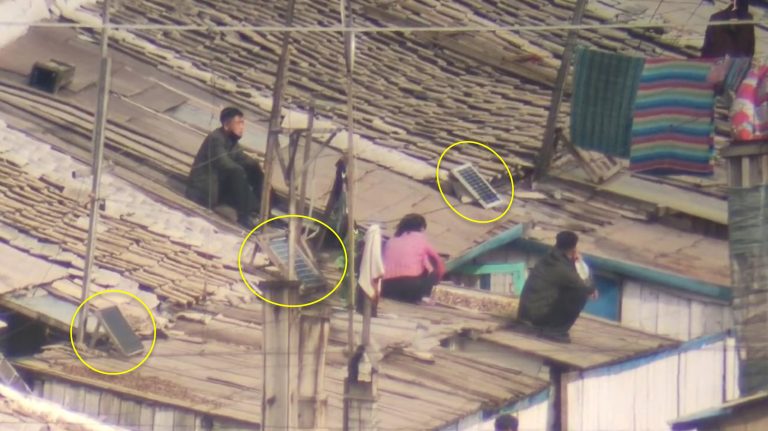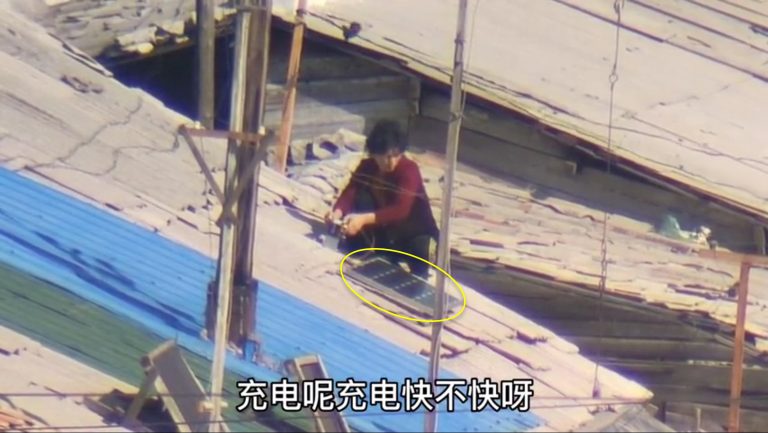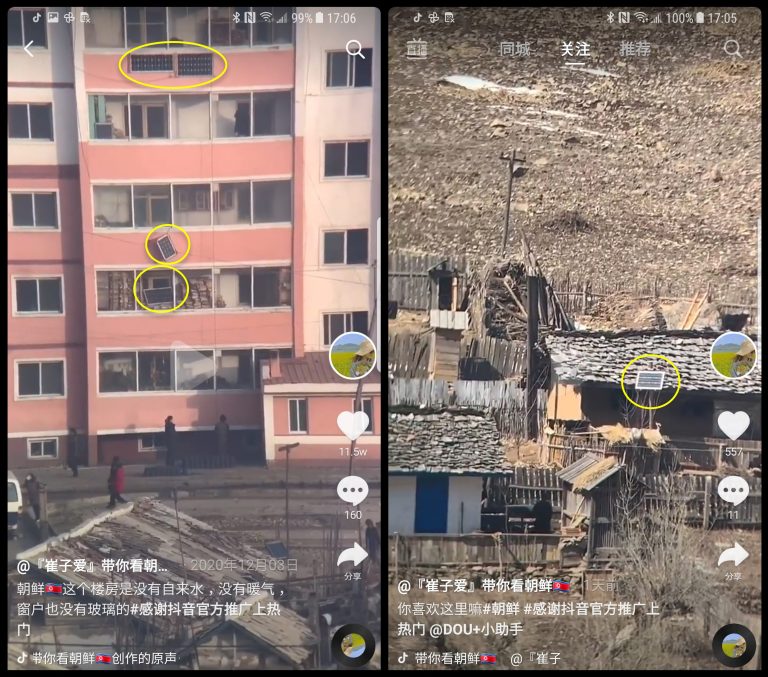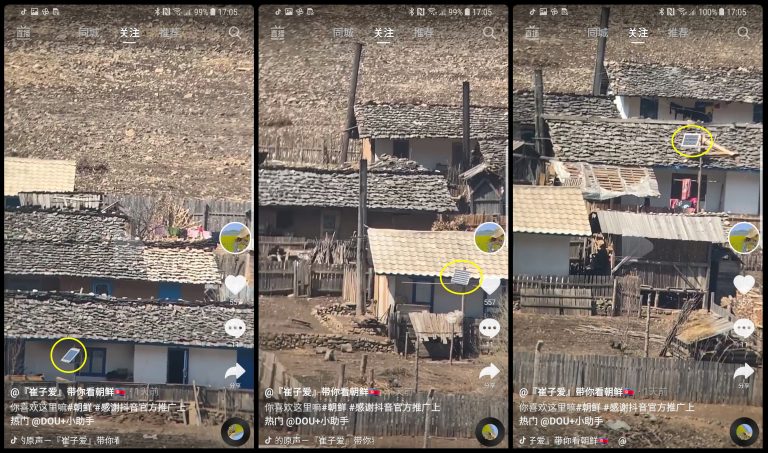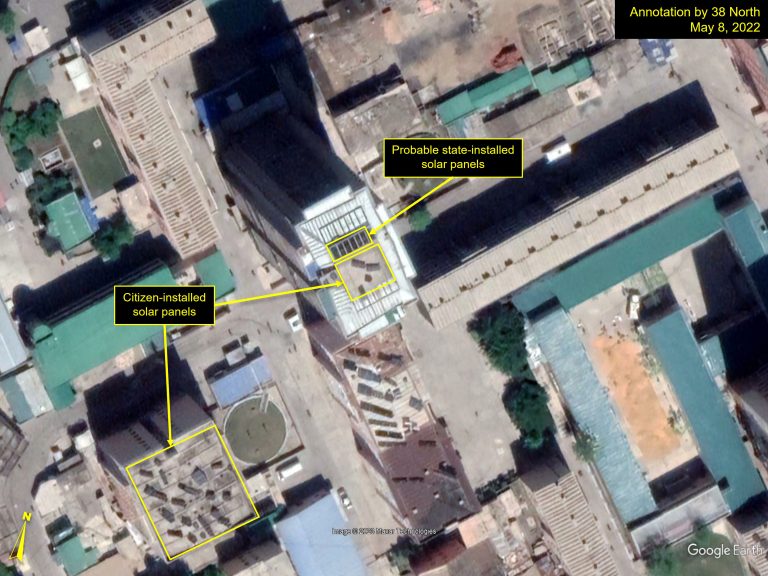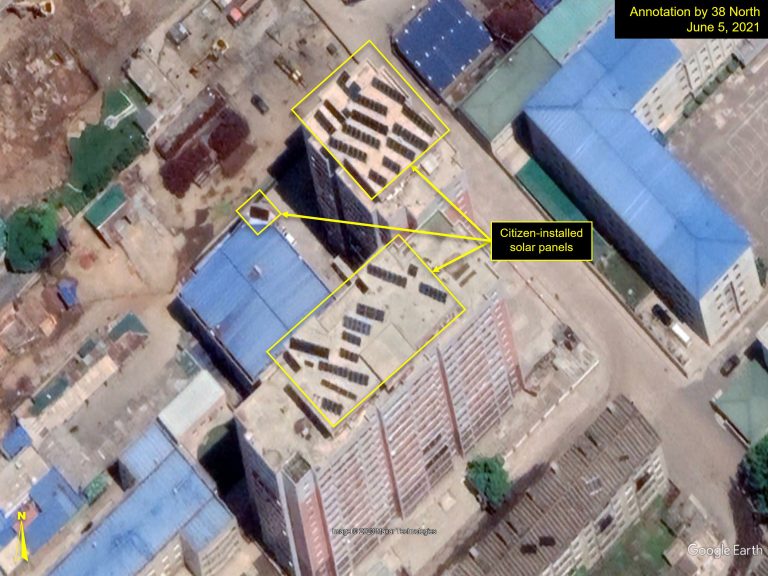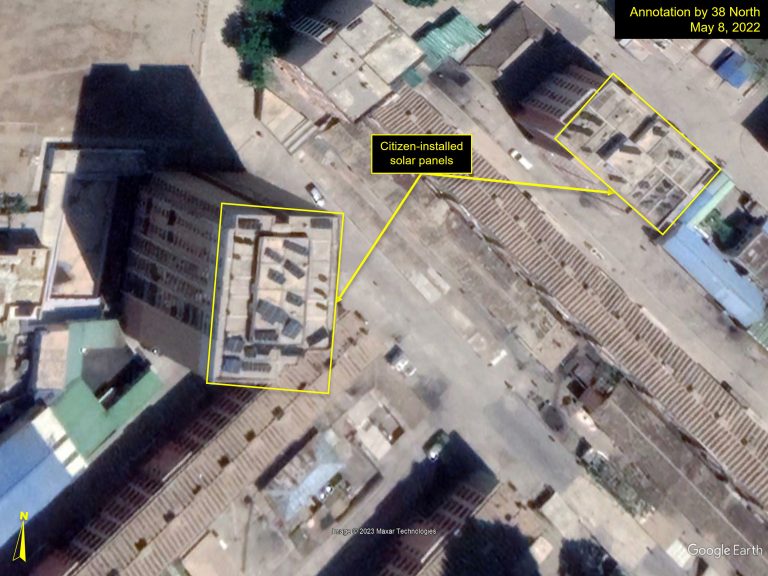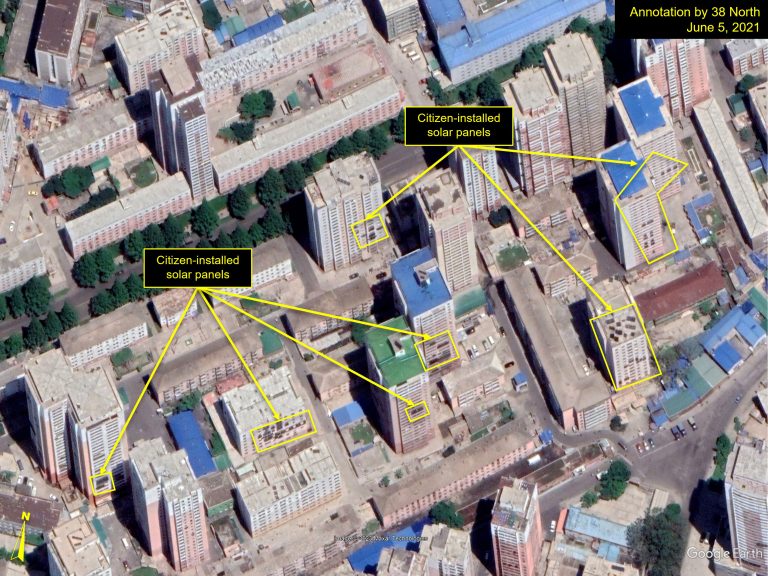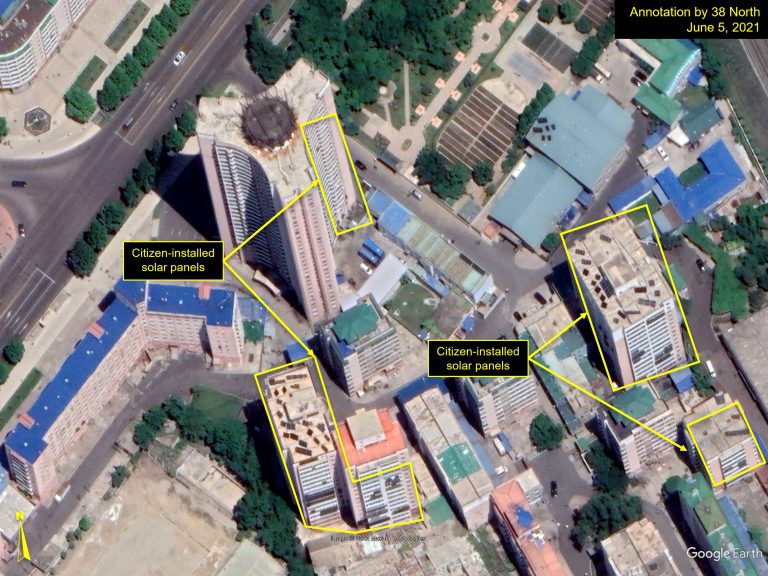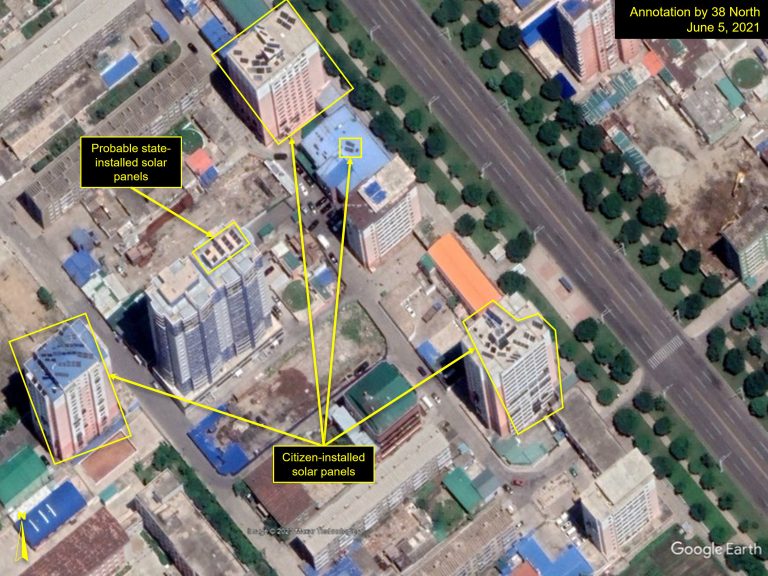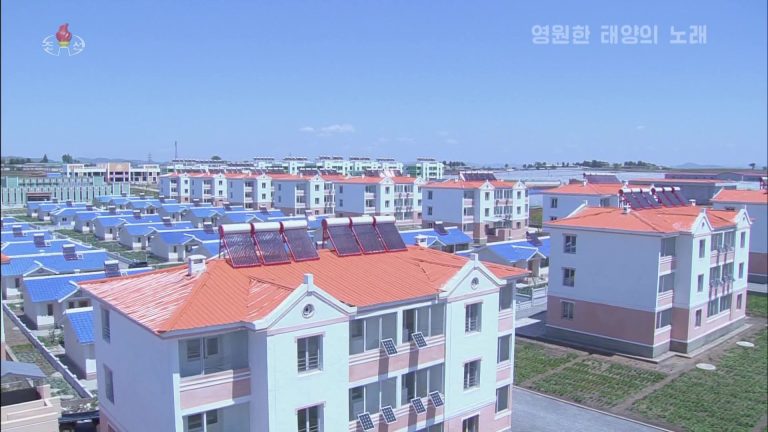North Korea’s Energy Sector: Civilian Solar Power
In this installment of our series on North Korea’s energy sector, we move away from official and commercial uses of solar and seek to understand the growing use of solar power for personal energy consumption in a country where its people still suffer from an unreliable power supply nationwide.
Data from recent interviews of North Korean defectors corroborate an astounding lack of state-provided electricity.[1] This shortage affects both urban and rural areas across the country, adversely impacting state-owned facilities, homes and even mobile phone connectivity, which has become ubiquitous in everyday life and the North’s private economy. While alternative forms of energy—such as diesel power and illegal power grid hook-ups—exist, for many, the answer is a solar panel.
Defector interviews, along with DPRK state media and satellite imagery, point to an uptick in personal solar installations over the last decade as many citizens have seemingly given up expecting the government to provide adequate and consistent electricity and are adopting a “do-it-yourself” attitude in order to live their lives.
How It Works
A typical installation of solar panels is simple: a solar panel on a roof or balcony is connected via regulator to a large battery. During the day, electricity from the solar panel trickle charges the battery. At night, the power from the battery can be harnessed to either directly power low-voltage devices or is fed through an inverter to provide a 100-volt supply for household appliances.
Estimations on the size of the panels varied in our interviews, but most were around 60 square centimeters. According to interviewees, that was enough to provide at least 100 watts and run a small appliance each evening.
The amount of power is limited by the capacity of the battery, the charge that can be supplied by the solar panel, and the actual amount of sunlight that can be harnessed. The longer, brighter summer days provide more power than shorter, darker winter days. One defector reported the months from January to April are especially bad, with cloudy and rainy days also resulting in less power.
We charged up a battery using a solar panel that is made in China. We would charge it in the daytime. It was sufficient to provide electricity to use for one night. But on rainy days or cloudy days, we cannot charge the solar panels. Theoretically, we had electricity cables [to our apartment]. Cables are also set up in rural areas as well, but, in reality, we did not get electricity.[2]
The Rise of DPRK Citizen Solar
It has been more than a decade since the first personal solar panels entered the country from China. Availability and prices began improving following the 2012 Pyongyang International Trade Fair and got better in the last five years as domestic panels came on the market. A small solar panel can reportedly be bought for around $15-$50, making it an attractive alternative to costly generators and batteries.
“We rarely got electricity. We used solar panels. For generators, you need to have gasoline to power the generator, so only certain families had them.”[3]
The rise in domestic production of solar panels has likely played a role in bringing the price down. In 2017, a state media article indicated personal solar was being actively encouraged by the North Korean government, and TV coverage in 2018 showed domestic solar panel manufacturing at Kim Il Sung University.
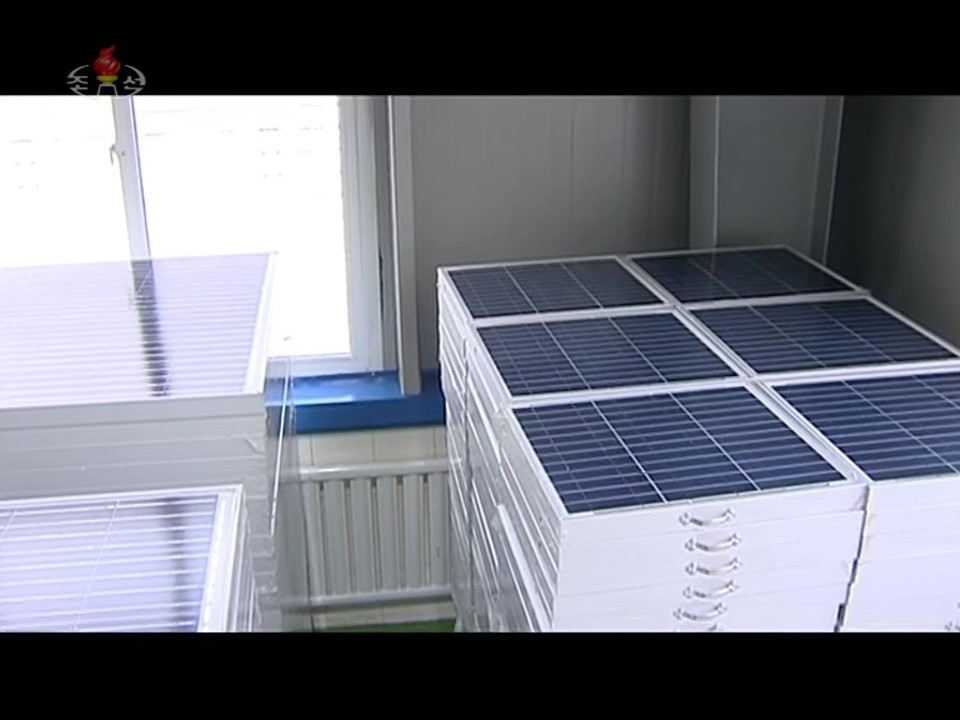
Recent defector interviews offer a range of scenarios for how solar is currently being used. Some from more urban areas reported installing small panels to supplement state-provided electricity and power personal devices, while others from more rural regions discussed the necessity of personal solar panels due to extremely limited access to and inconsistent electricity supply.
Urban and Rural Citizen Solar Installations
Generally, access to electricity gets worse the farther someone is from Pyongyang and other major cities. In the more remote areas, solar panels are a must for government offices and facilities that require power to run throughout the day.
Such panels are difficult to see in satellite imagery due to their limited size but are easily visible in images and videos of homes, such as those across the Yalu River from China.
These communities utilize their close proximity to the border to initiate trade and private economic activity and have access to more hard currency to purchase and transport panels from China. Two defectors from Hyesan who left North Korea in 2019 suggested most of the solar panels in the city were from China, consistent with reports from around the same time.
In some cases, small solar-powered devices might also be used. Solar versions of the “Notel“ (노텔) digital media player were available and directly charged an internal battery, so they didn’t require other power.
Several defectors from rural areas reported that the electricity supply was so minimal and inconsistent that they often only expected state-provided power on New Year’s Day and other national holidays, such as the birthday of North Korean leaders.
“[In my province,] we only got electricity for a few hours once a year.”[4]
“There were many days where we had no electricity at all. When the leader gives the New Year’s Address, that is the time when all houses have stable electricity.”[5]
“Electricity was provided on special days, like the birthdays of Kim Il Sung. I remember when I was a kid, we had more electricity, but as time went by, it got worse.”[6]
In Urban settings, the power situation is better, but not good.
“…There is a very large gap and a divide between people who get electricity and people who don’t get electricity.”[7]
Even in Pyongyang, solar panels appear to be commonplace on buildings and dwellings to supplement electricity shortcomings. Such panels can be seen on satellite imagery because they tend to be larger. It is unclear if this is due to greater wealth in the capital allowing residents to buy larger panels, and thus generate more power, or if residents are working together to purchase panels.
The imagery signature is unique. Industrial panels on factories and institutions are neatly installed in large arrays, while personal panels tend to be more or less placed wherever there is room with little coordination.
The personal arrays are also visible on the sides of buildings in individual windows.
In some places, the state appears to have wholly embraced the individual solar route—a tacit admission of systemic power shortfalls. For example, in 2015, when the state built new individual solar panels and solar water heaters were included on houses and small dwelling units at the Jangchon Vegetable Cooperative Farm on the edge of Pyongyang.
North Korean defectors who had left the country within the last five years stated they could only expect a few hours of electricity a day, and the power came and went with no notice making planning impossible and supplemental sources essential.
[The electricity supply] wasn’t regular, and they didn’t tell you beforehand. Some days you will have electricity the whole day; some days you won’t. Some days you will have one or two hours in the morning or in the afternoon. But they don’t tell you in advance when you will have it.[8]
For those with money, one way to supplement their electricity supply was through an illegal power grid hook-up to the industrial electricity supply. With the right connections, tapping into the more reliable commercial lines to help keep factories running was also possible.
Hamhung is an industrial city, and there are plants that need to run 24 hours. So, the people who live near the plants didn’t have issues with electricity because they can steal the electricity from the plant. I had a neighbor who was a government official, so they had power.[9]
Moving Forward
An insufficient and unstable power supply is one of the critical challenges North Korea struggles to address. While solar energy has provided one way for citizens to better cope with this reality, it is incapable of supplying enough power to satisfy everyday operations and needs.
Solar energy is also “most restricted to land,” highlighting the necessity of alternative energy sources, such as hydropower, which we will explore in our next article.
- [1]
Interviews were conducted by 38 North staff in June and November 2022.
- [2]
- [3]
- [4]
- [5]
- [6]
- [7]
- [8]
- [9]

